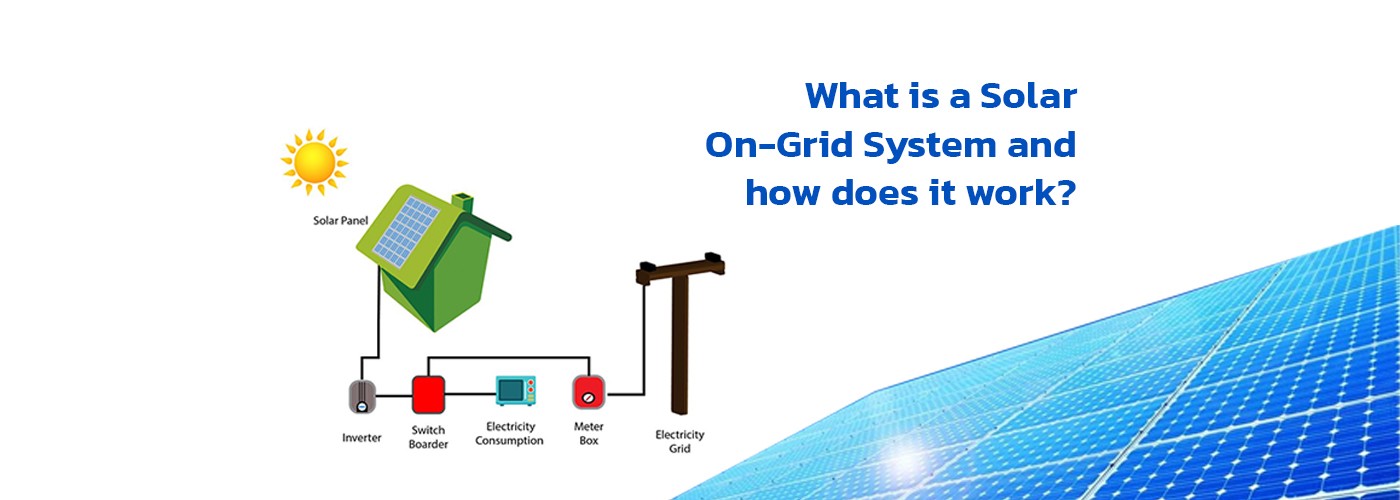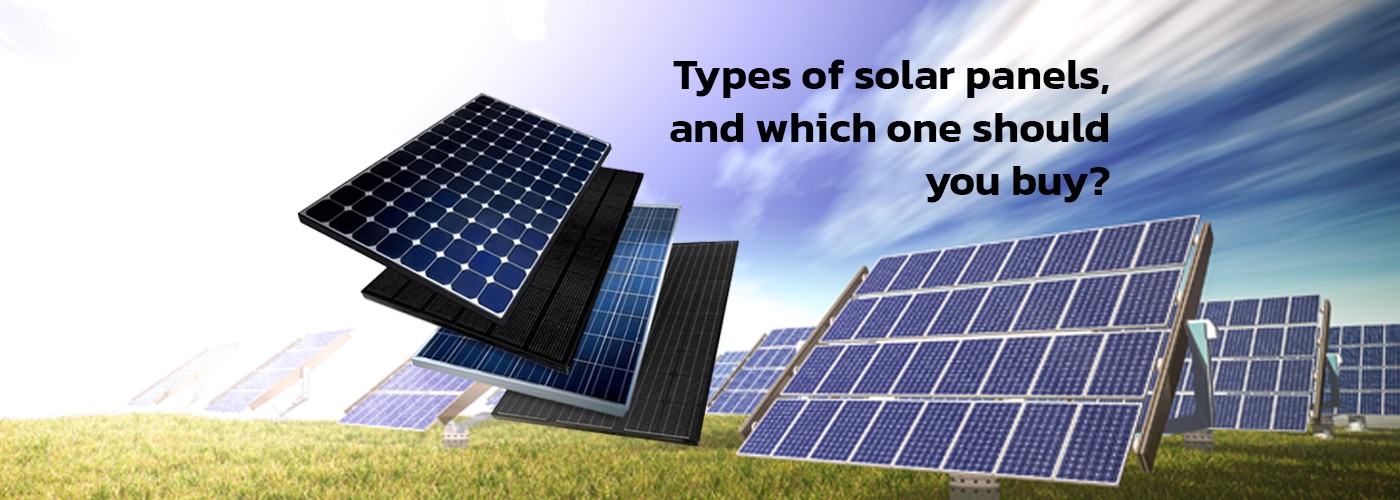All That You Want to Know About On-Grid Solar System

With fast technological breakthroughs in the field of solar energy, an increasing number of people are opting for solar power systems. The on-grid solar power system is the most popular of the several types of systems established around the world.
The essential principles of all solar power systems are the same. The photovoltaic (PV) effect is used by solar panels to convert solar energy or sunlight into DC power. The DC power can either be stored in a battery or converted to AC power for use in domestic appliances using a solar converter. Excess solar energy can be delivered into the power grid for credits or stored in a variety of battery storage systems, depending on the type of installation.
What is On-grid Solar System?
An On-grid solar system is a system that works along with the grid which means that any excess or shortage of power can be fed to the grid through net metering. Any power generation solar system that is linked to the utility grid is known as an on-grid solar power system. The electricity that is generated by this On-Grid Solar system is fed into the grid and used to power various electronic devices and household appliances. The installation of the same is equally simple and straightforward.
Many silicon-based photovoltaic cells (PV cells) are used in most modern solar panels to generate direct current (DC) power from sunlight. Within the solar panel, the PV cells are joined together and cables are used to connect them to neighboring panels. Photovoltaic cells generate energy from sunshine, or irradiance, rather than heat. Solar panels, also known as solar modules, are usually strung together to form a solar array. The amount of solar energy generated is determined by a number of factors, including the solar panels’ orientation and tilt angle, their efficiency, and any losses due to shadowing, dirt, or even ambient temperature. Because there are so many different solar panel manufacturers on the market, it’s important to know which ones are the best and why.
How does On-grid Solar Power System work?
Solar modules are placed in such a way that they absorb and convert sunlight into electricity. Here, direct current (DC) is produced. The DC is subsequently converted to Alternating Current (AC) by the solar inverter, which then powers the electrical goods. This electricity is subsequently delivered to the grid, where it is used on a daily basis. A net meter is an important device that tracks how much energy is given to the grid and how much energy is consumed. The outstanding balance is recorded at the end of each month, and the consumer is sent a bill.
On-grid solar systems, unlike hybrid systems, cannot work or generate electricity during a blackout for safety concerns. Because blackouts typically occur when the energy grid is destroyed, if the solar inverter continued to feed electricity into a damaged grid, it would jeopardize the safety of those working to repair the network’s faults. During a blackout, most hybrid solar systems with battery storage can immediately disconnect from the grid (known as islanding) and continue to deliver some power.
What happens after energy hits the switchboard in an on-grid system:
- All the surplus solar energy is channeled through the meter, which determines how much power you are exporting or importing. Many states and nations across the world have distinct metering systems. In this explanation, there’s the assumption that the meter only records the amount of electricity that is exported to the grid.
- In some states, meter record all solar energy generated by your system, thus your power will pass through your meter before reaching the switchboard, rather than after. The meter measures both production and export in some regions, and the consumer is taxed (or credited) for net electricity used over a month or year.
- The electricity that your solar system sends to the grid can then be consumed by other grid users. You will start importing or using electricity from the grid if your solar system is not operational or if you are using more electricity than your system produces.
Read Also: Types of solar panels, and which one should you buy?
On-grid Solar System Advantages
1. Reduced electricity bills
Even if the solar power system is connected to the grid, the consumer only pays for the excess electricity he uses. The consumer’s monthly bill determines whether or not there are any outstanding payments. Alternatively, if the user uses less electricity, the surplus is pumped back into the system.
2. Low maintenance
An on-grid solar power system has the fewest parts and is the easiest to install. Because batteries aren’t used, maintenance is a breeze.
3. Passive Revenue Production
With a grid connection, the consumer can charge for any excess electricity generated. It not only eliminates your electricity expenses, but it also provides cost savings for the excess electricity produced.
Why Net Metering is Required for On-grid Solar System?
There is also an option of net metering to customers who want to install a grid-connected rooftop solar system in their area of supply on a non-discriminatory, first-come, first-served basis. AC electricity from the solar inverter is routed to the switchboard, where it is drawn into the various circuits and appliances in your home in a typical grid-tied solar system. If you have a hybrid system, any extra electricity generated by the solar system is transmitted to the electricity grid through an energy meter or saved in a battery storage system. However, in other nations, ‘gross metering’ is used, in which all solar energy is exported to the electrical grid.
Hybrid systems have the ability to both export excess electricity and store it in a battery. Some hybrid inverters may be connected to a dedicated backup switchboard, allowing for the powering of some “important circuits” or crucial loads during a grid loss or blackout.
Conclusion
Solar systems that are connected to the grid, or on-grid, are by far the most prevalent and frequently used by homes and businesses. These systems do not require batteries and are powered by solar inverters or micro-inverters. They are also connected to the power grid. You normally get paid a feed-in-tariff (FiT) or credits for any extra solar power you create when you export it to the electrical grid.
Read Also: Can Your House Run on a 5kW Solar System?




